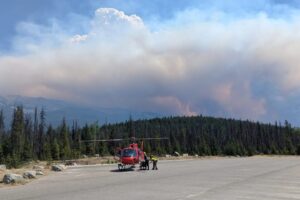
The Matterhorn. Photo by Zermatt-Matterhorn
The king of the Alps towers above the humble Swiss village of Zermatt, intimidating and tantalizing locals and visitors alike. The iconic pyramidal peak, which straddles the border between Switzerland and Italy, turned the 19th century into a dramatic race for the summit, where victory was to be had at any cost.
The first ascent of the Matterhorn, a tale of obsession, deceit and legendary achievement, had its humble beginnings with a curious engraver by the name of Edward Whymper. Unlike his climbing counterparts, who were men of education and upper class standing, he looked upon the Matterhorn with a childlike wonder and unwavering belief that his social class would not prevent him from touching the summit first. Whymper’s fame stemmed not only from his severe lack of experience and equipment, but also his revealed natural talent for climbing.

Edward Whymper played by Robert Douglas in The Challenge (1938).
However, to ensure some semblance of safety on his perilous endeavor, he ventured to the other side of the Matterhorn to procure a guide. The Italians were known for their climbing skills as well as their acquaintance with the beloved mountain. Whymper came across a guide named Jean-Antoine Carrel, who had all the answers for conquering the giant.
Carrel revealed himself to be the villain in this epic tale, as he purposefully betrayed Whymper to take the mountain for himself and an important client of his: a man who worked for the Italian government. Whymper, against all odds and totally by chance, happened upon other mountaineers in his hotel and convinced them to join him to beat the Italians to the top.
You are probably wondering if the story ends in victory, fame and legend. Yes and no. Divine providence sided with Whymper, as the Italians were stranded 300m below Whymper’s party in bad weather. Carrel admitted defeat, ascending three days afterward.
And yet, the first ascent of the Matterhorn came to a bittersweet and tragic end, with the death of four team members during their descent. The details of the accident were clouded in controversy and conspiracy, leading to Queen Victoria’s intervention in the sport, almost completely banning mountaineering. Nevertheless, not even the highest power in Europe could stop the pull of the mountains, inspiring generations to come.






